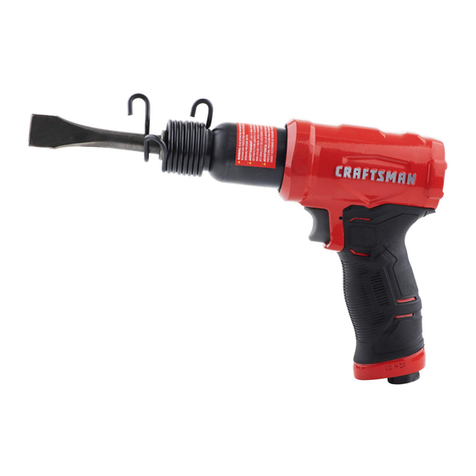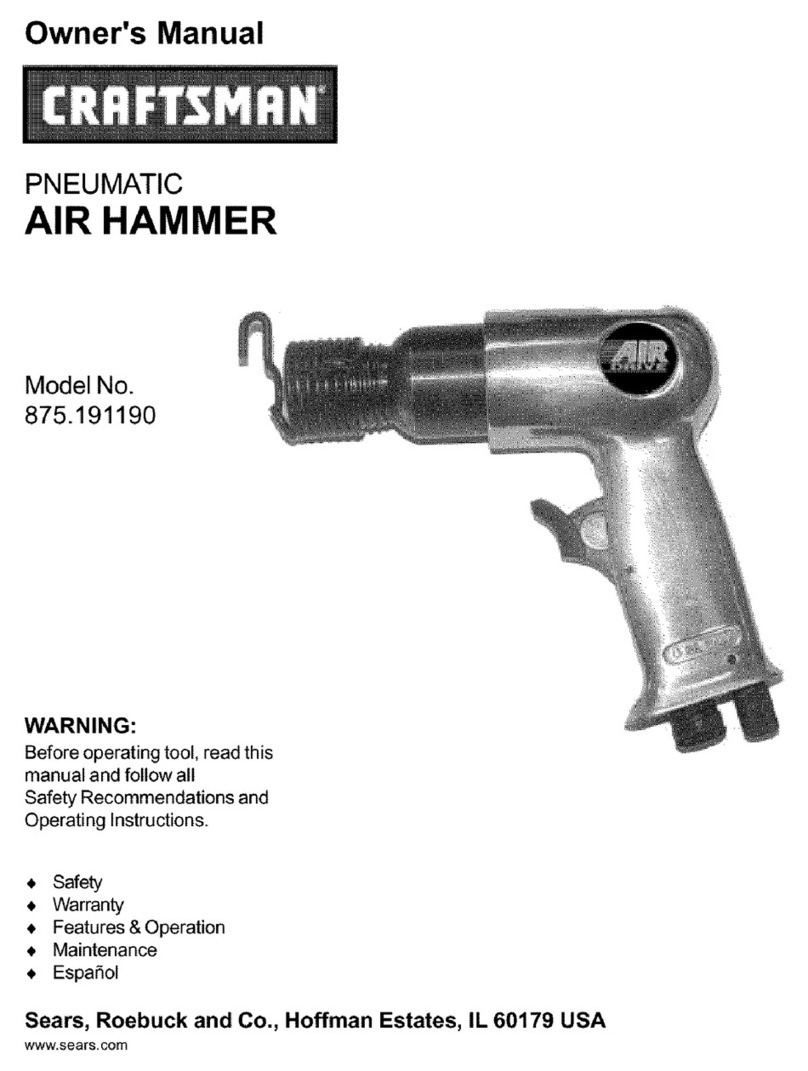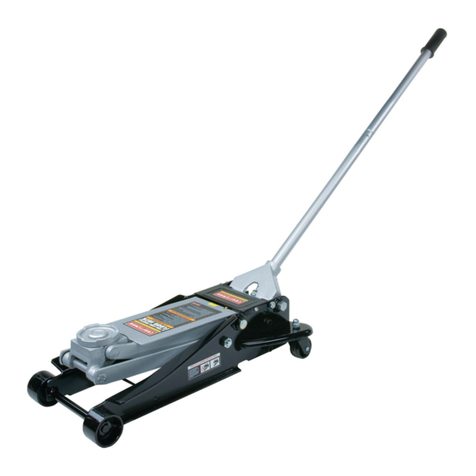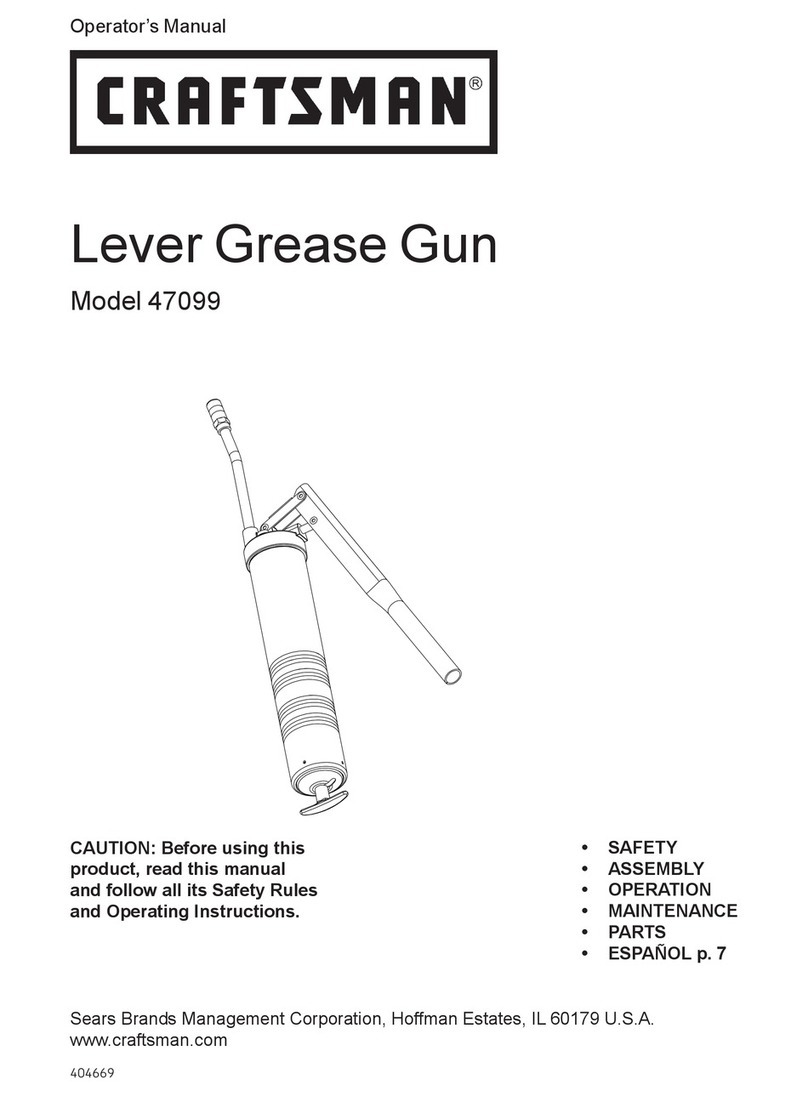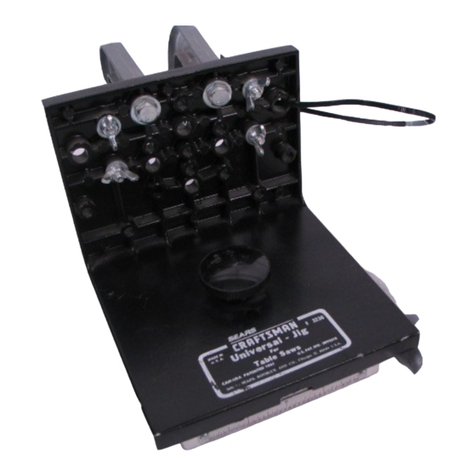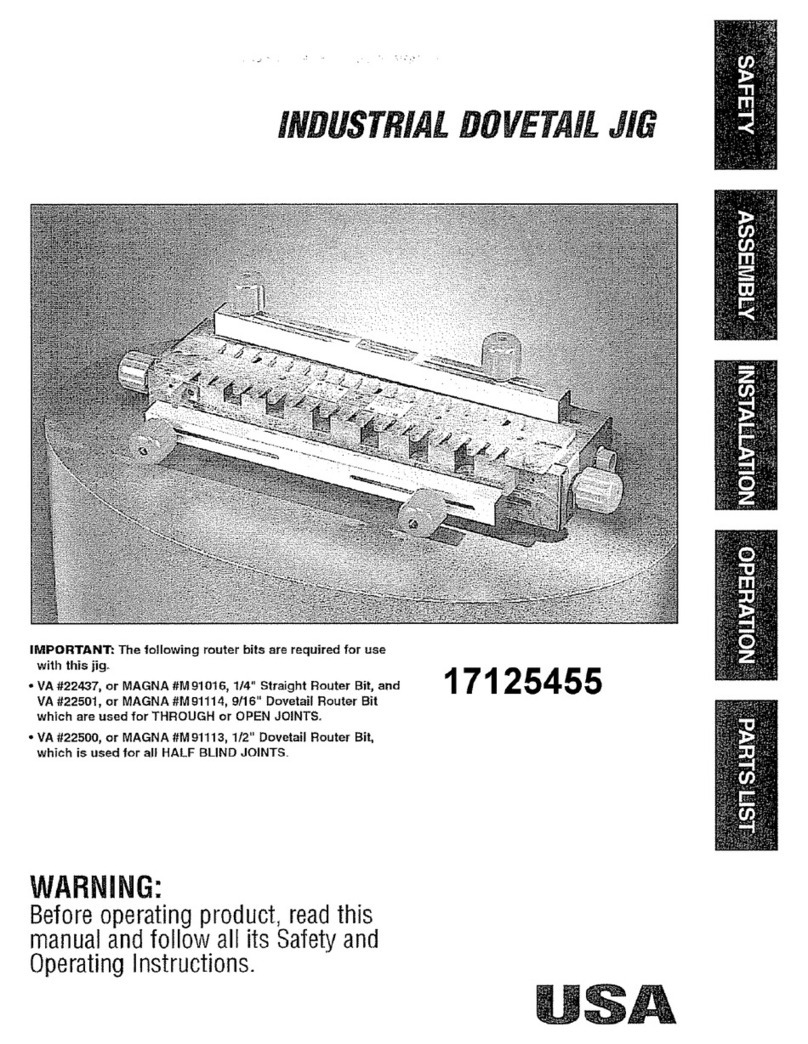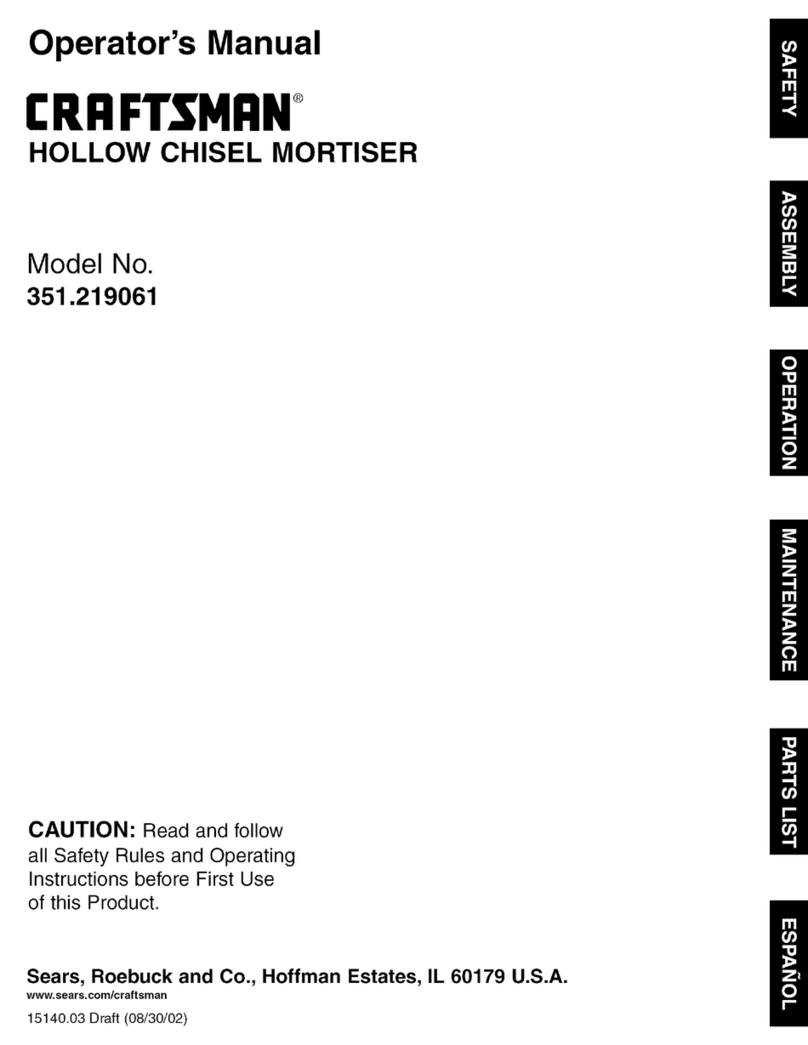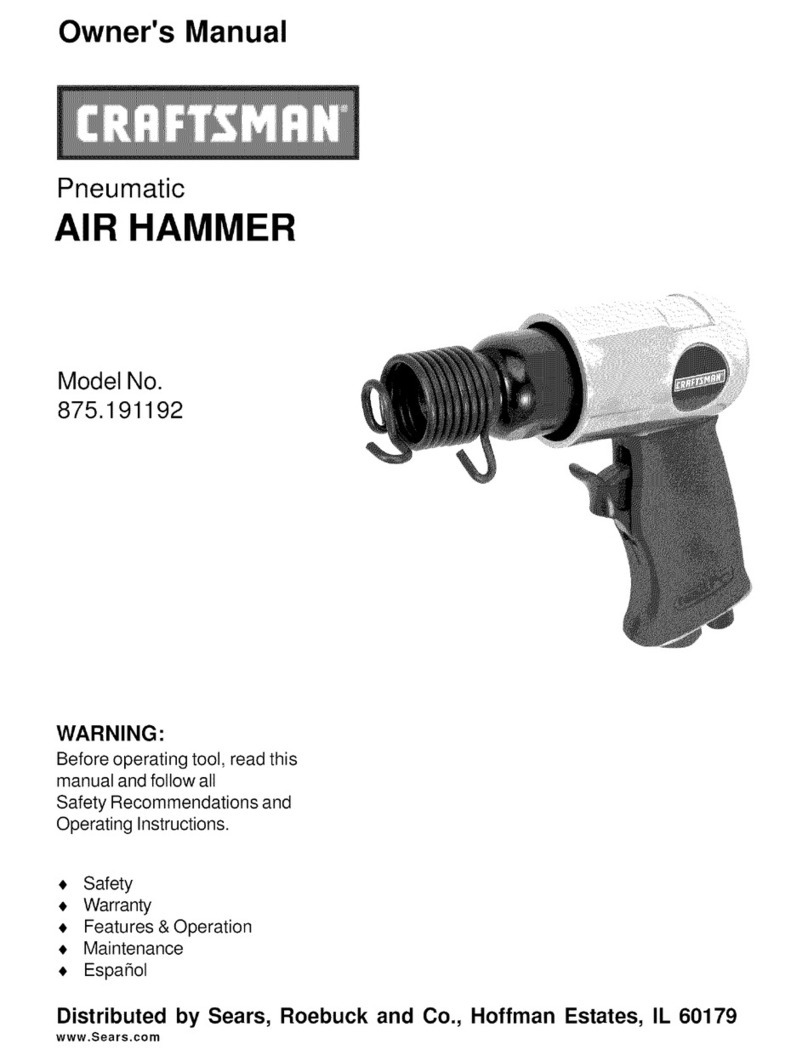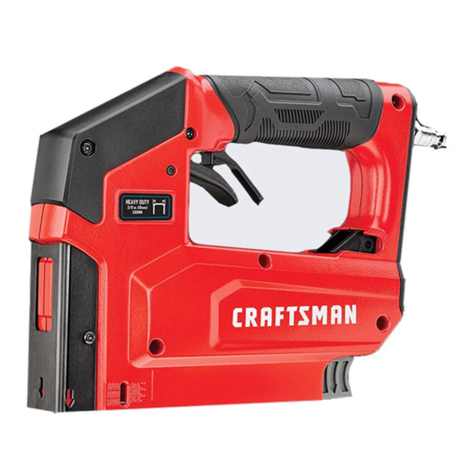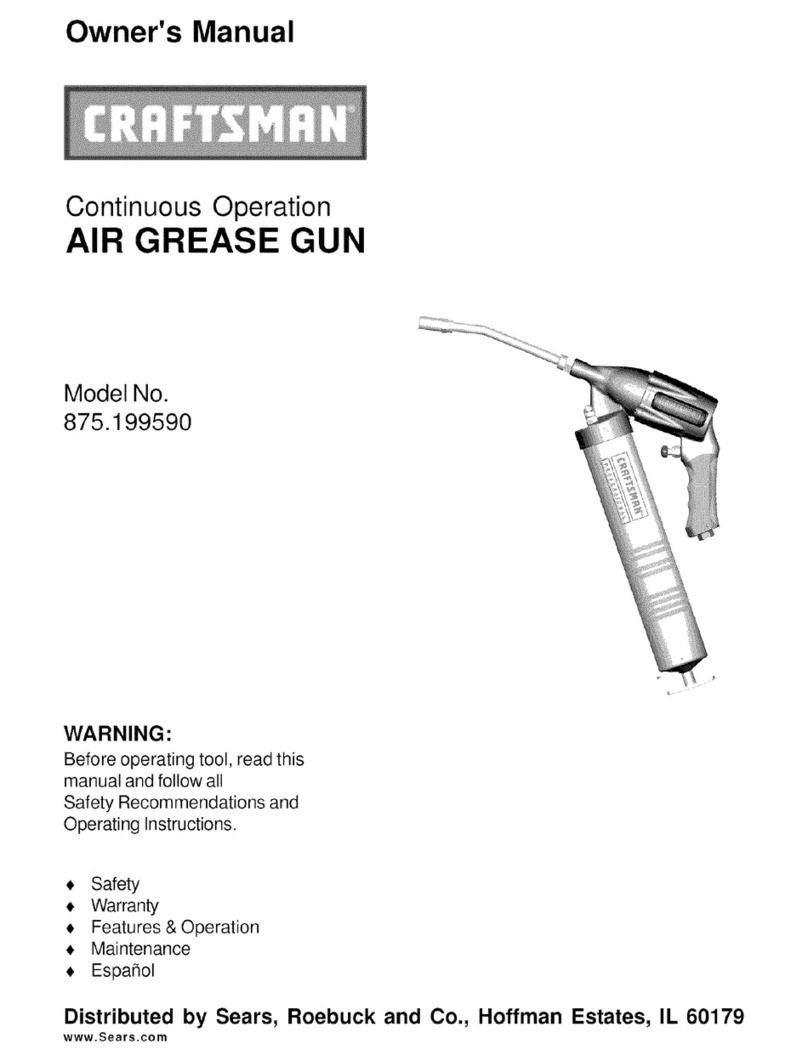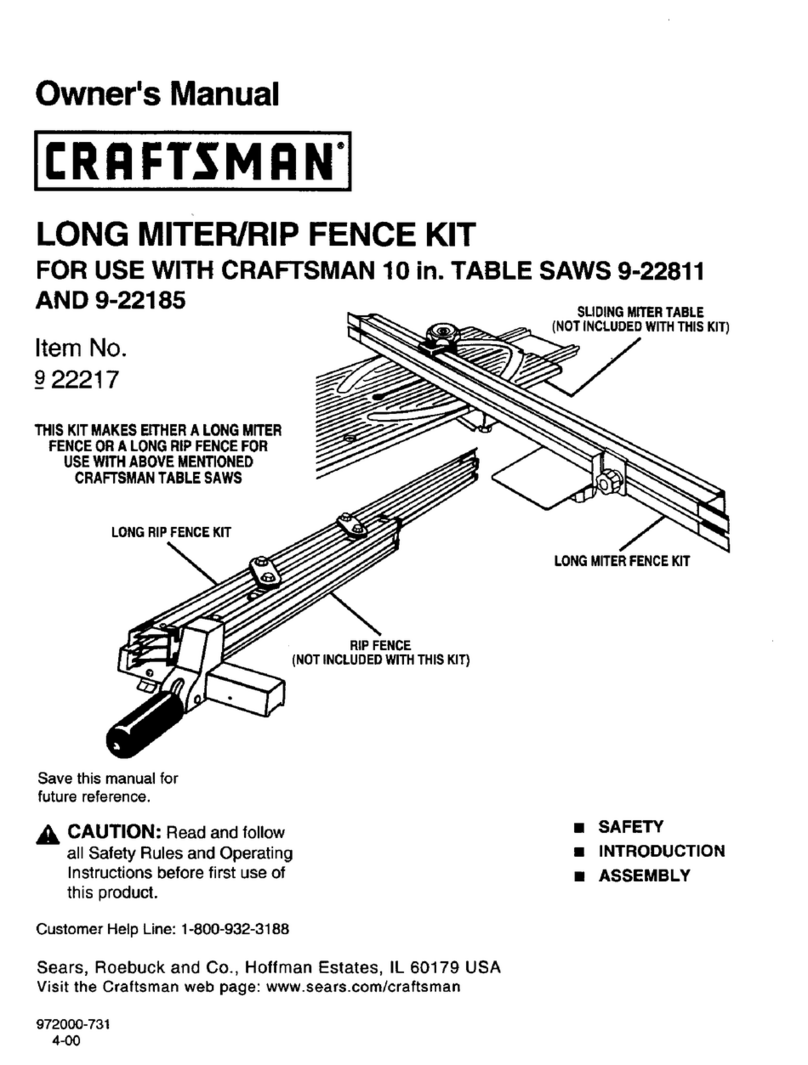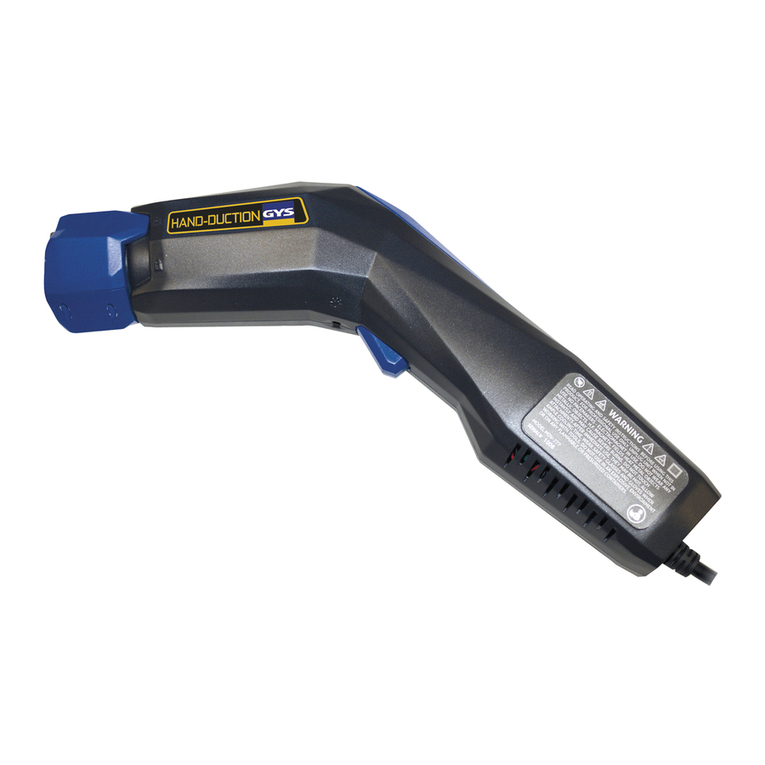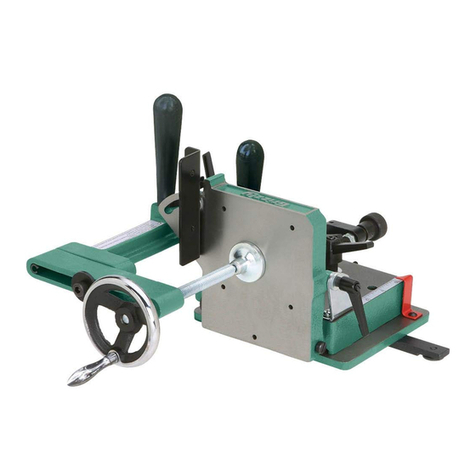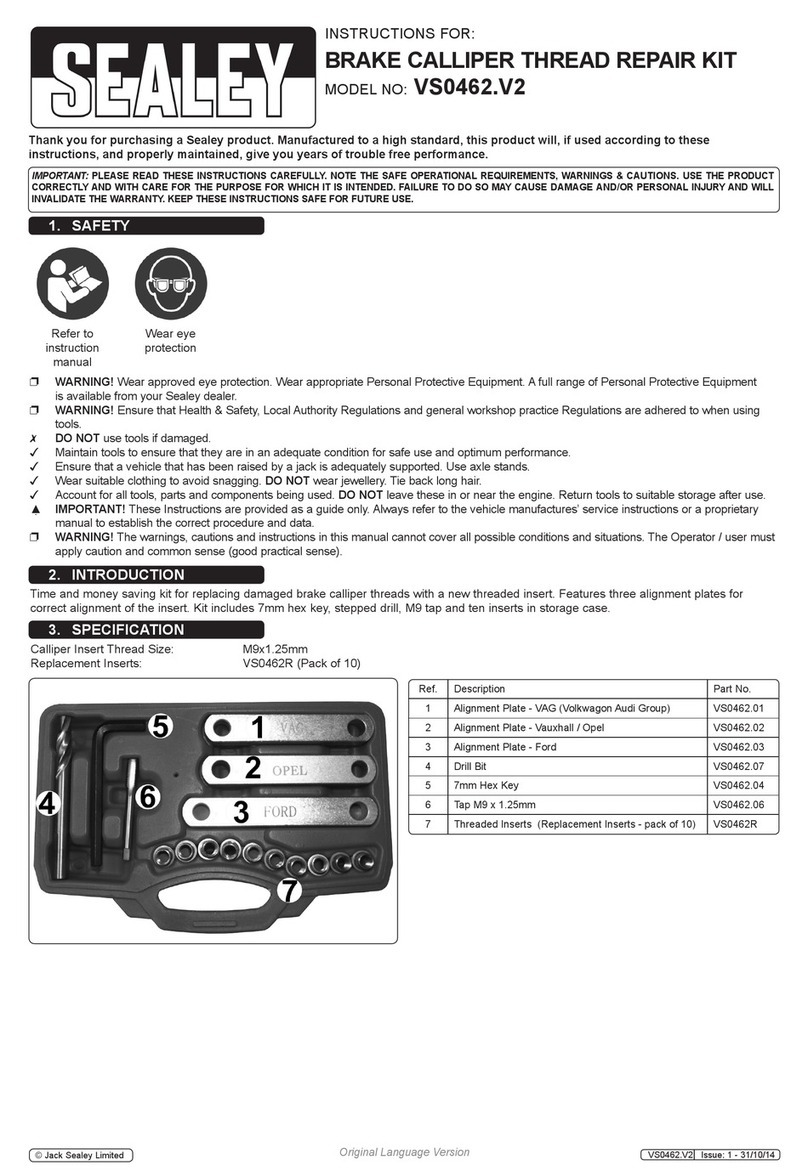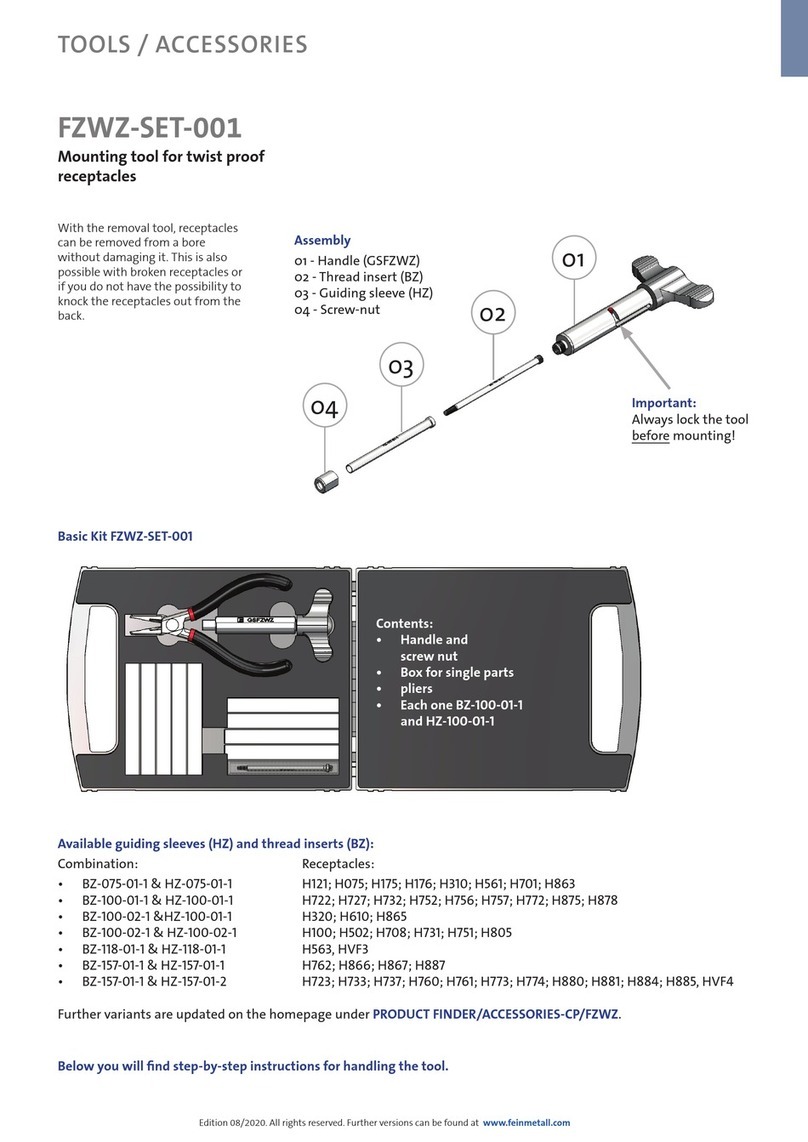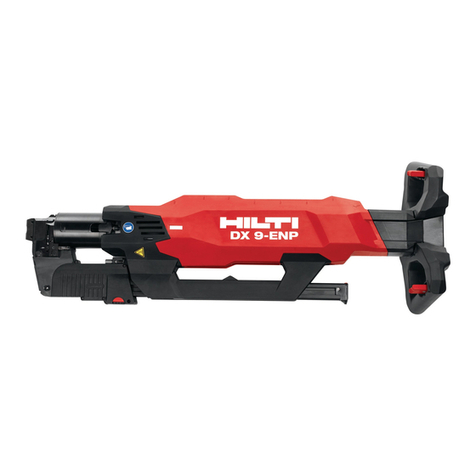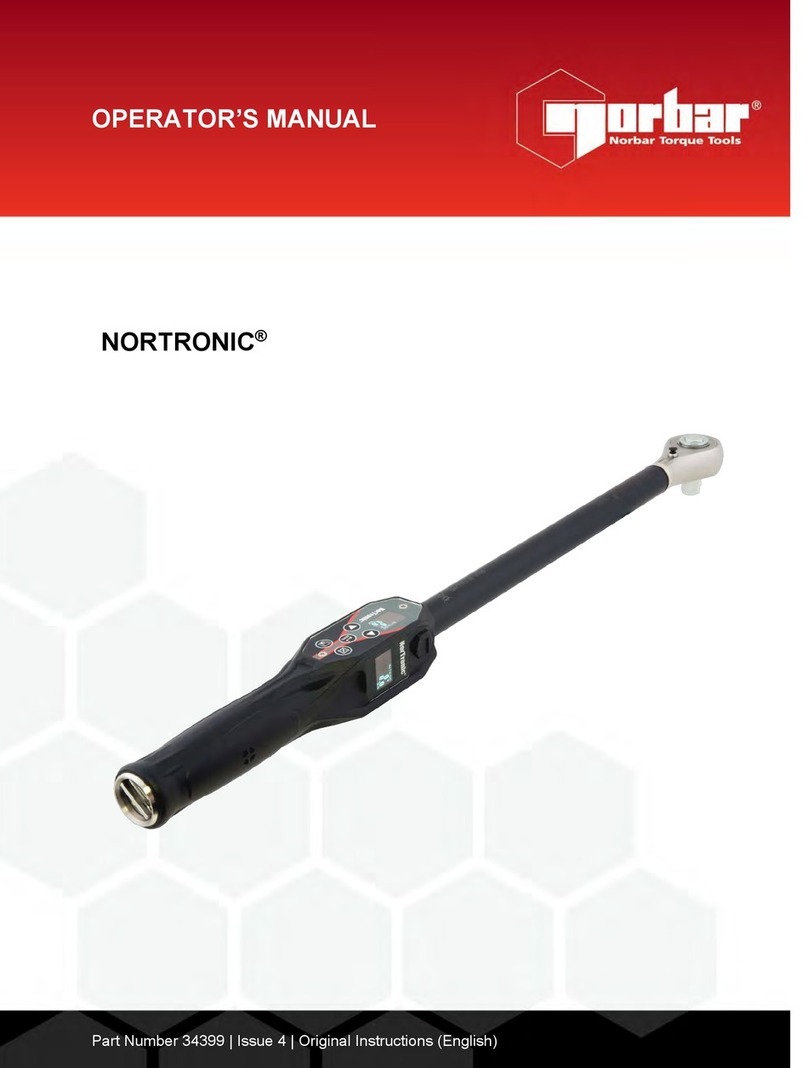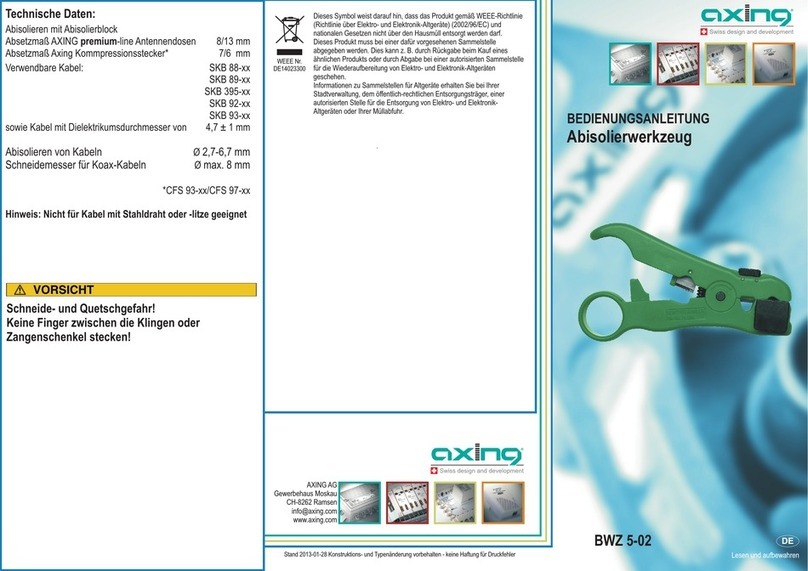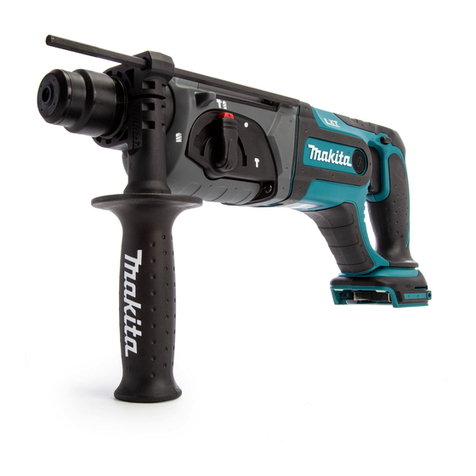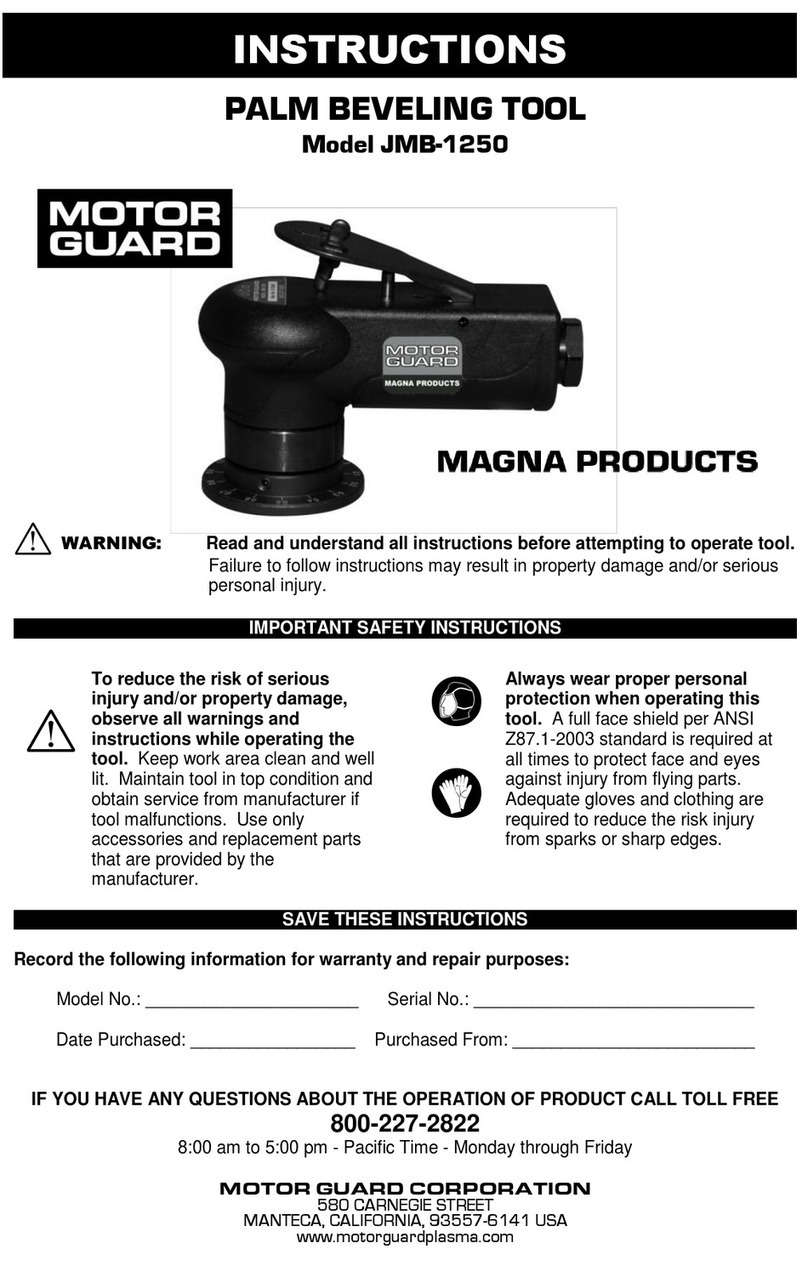
MAKING RIP-CUTS WITH YOUR ACCU-RIP
Loosen the Cut-Guide Handle, and move the Cut-
Guide to the desired dimension of your cut.
Hold the Cut-Guide at the desired dimension, and
hand tighten the Cut-Guide Handle securely. Do
not use a tool to tighten the Cut-
Firm hand tightening is adequate to keep the
Cut-Guide from moving during use.
You are now ready to make a cut. Simply make the
cut as you normally would, keeping the face of the
Cut-Guide (E) against the edge of your material as
shown in Fig.9.
Use the “push-plate” on the top of the Cut-Guide (E)
to hold the Cut-Guide face against the edge of the
material during the cut. You should also use the
“push-plate” to push the Cut-Guide forward at the
same pace as your saw. This is especially
important when making wider cuts.
Fig. 9 shows the proper method for using the Accu-
Rip to make a wide cut. Note the user is pushing
the Cut-Guide (E) through the cut, keeping it
parallel with the saw.
:
§As with any new tool, you may want to make a few
cuts of various widths, to become familiar with the
operation. When making cuts using the Accu-Rip,
you should push the Cut-Guide (E) in a FORWARD
direction, while applying only the minimum amount
of sideways pressure needed to hold the Cut-Guide
against the edge of the material. Pushing the Cut-
Guide too hard against the edge of the material
can cause binding, and may adversely affect the
accuracy of your cut.
§Various circular saws produce different levels of
vibration during use. In some cases this vibration
may be extreme, especially with older saws, or if a
worn or incorrect blade is used. If you find that the
Cut-Guide moves during use, it is probably due to
excessive vibration from your saw. In
the Cut-Guide to the desired dimension, and tighten
the Cut-Guide handle using more pressure.
4.
Pay particular attention to the last 1to 2 inches of
your cut. You should reduce the amount of
”sideways” pressure being applied, and slowly push
both the saw and the Cut-Guide in a straight line
through the last portion of the cut. Too much
pressure against the Cut-
the last portion of the cut can cause the saw to
move off the intended cut line.
Edge of Material
Fig. 9
Before making cuts, always make sure the Zero mark on
the Accu-Rip is precisely aligned with the Zero mark on
your saw. Also, make sure that the vertical section of
The Accu-Rip is pushed firmly against the front edge of
your saw's base plate. If needed, make the necessary
adjustments before proceeding.
